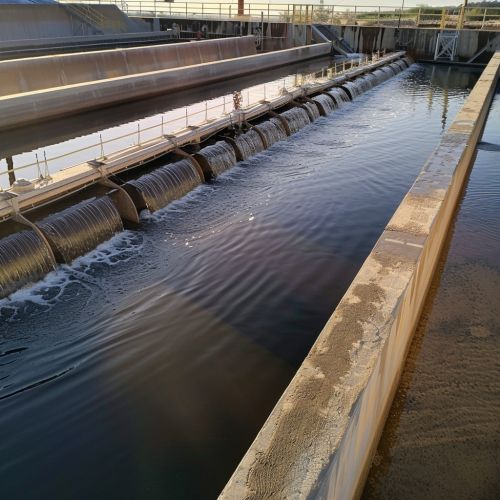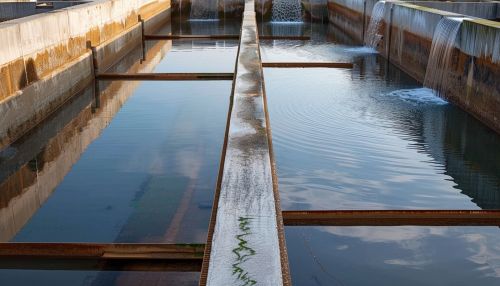Sedimentation (water treatment)
Introduction
Sedimentation is a physical water treatment process used to settle out suspended solids in water under the influence of gravity. The suspended particles may be particles, parasites, bacteria, algae, viruses, fungi, or minerals such as iron and manganese. The process is also used to remove pollutants from water before it is discharged into natural water bodies.
Principle of Sedimentation
The principle of sedimentation is based on the fact that the velocity of a particle falling under gravity depends on its size and weight. Larger and heavier particles settle out more quickly than smaller or lighter ones. Thus, sedimentation is effective for removing particles that are significantly denser than water.
Types of Sedimentation
There are several types of sedimentation used in water treatment, including plain sedimentation, sedimentation with coagulation, and sedimentation with flocculation.
Plain Sedimentation
Plain sedimentation, also known as free sedimentation, is the simplest form of sedimentation. It involves allowing water to stand undisturbed in a tank or basin while the heavier suspended solids settle to the bottom under the influence of gravity. The settled solids, known as sludge, are then removed for further treatment or disposal.
Sedimentation with Coagulation
In sedimentation with coagulation, a coagulant is added to the water to help the suspended particles clump together and form larger particles, known as flocs. The flocs are then easier to remove by sedimentation. Common coagulants used in water treatment include aluminum sulfate, ferric sulfate, and ferric chloride.
Sedimentation with Flocculation
Sedimentation with flocculation is similar to sedimentation with coagulation, but it involves the addition of a flocculant after the coagulant. The flocculant helps the flocs to grow larger and settle out more quickly. Common flocculants used in water treatment include synthetic polymers and natural substances such as starches and gums.
Design of Sedimentation Tanks
The design of sedimentation tanks is a critical aspect of the sedimentation process. The tanks must be designed to provide sufficient time for the suspended solids to settle out, while also preventing the resuspension of settled solids. Factors that influence the design of sedimentation tanks include the flow rate of the water, the characteristics of the suspended solids, and the desired quality of the treated water.


Performance and Efficiency
The performance and efficiency of sedimentation as a water treatment process depend on several factors, including the characteristics of the suspended solids, the design of the sedimentation tank, and the operating conditions. In general, sedimentation is most effective for removing large, dense particles. However, the efficiency can be improved by using coagulation and flocculation to increase the size and weight of the particles.
Environmental Impact
Sedimentation has a relatively low environmental impact compared to other water treatment processes. It does not involve the use of chemicals (unless coagulation and flocculation are used), and it does not produce harmful byproducts. However, the sludge produced by sedimentation must be properly treated and disposed of to prevent environmental contamination.
